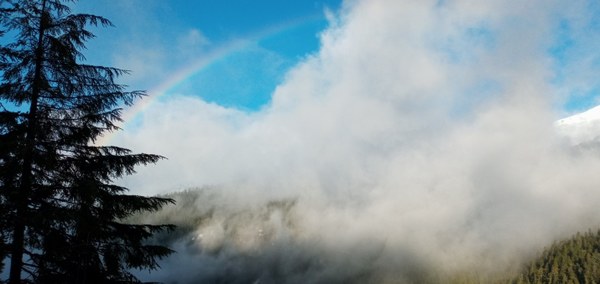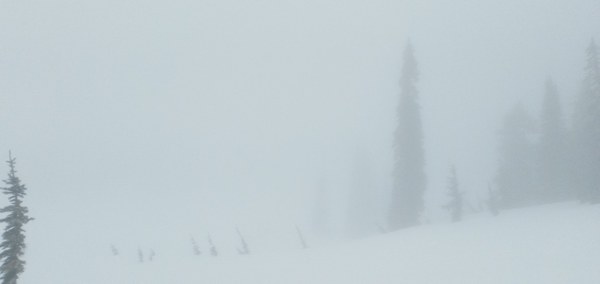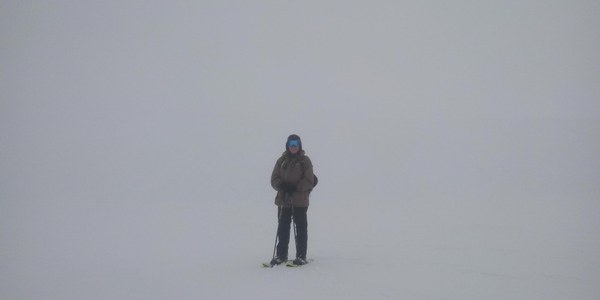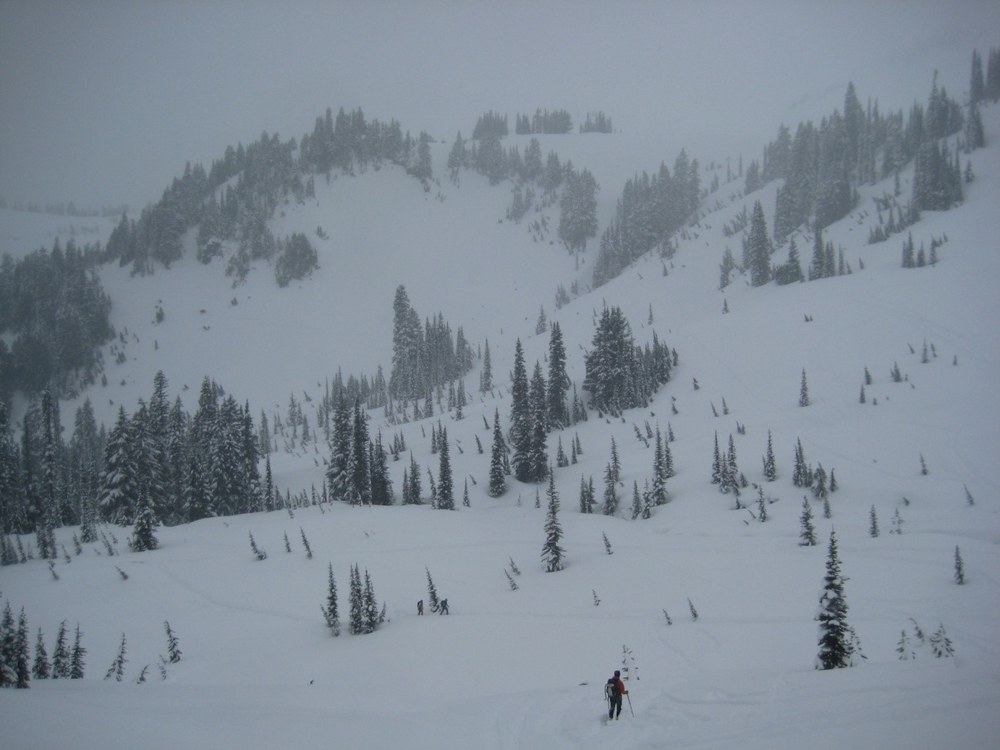
Mount Rainier offers many winter recreational opportunities at Paradise, including family sledding areas, Ranger-guided snow walks and talks, backcountry skiing, snowboarding, snowshoeing, and winter camping.
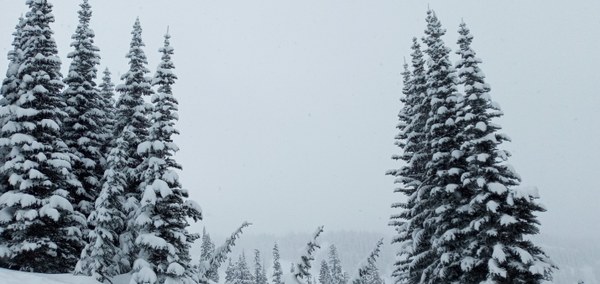
To minimize risk while recreating at Mount Rainier, do your part to be prepared for the unexpected. While the mountain can be fun, it can be dangerous. The best way to be prepared is to familiarize yourself with the park and the activity you wish to do. Whatever your activity is, I suggest investing in a good topographical map of the area you wish to explore.
Learning how to read a topographical map and use a compass were the best tools I’ve gained to help me navigate in the backcountry. Nowadays, many backcountry enthusiasts use GPS to help them navigate, but most people still keep their trusty map and compass on-hand, just in case.
In addition to navigation tools, always carry the 10 Essentials. For winter travel, in addition to the 10 Essentials, I bring: a sit pad, a bivy sack, a full length insulated sleep pad, gaiters, goggles/glacier glasses, a small stove with extra fuel, and pot for making water, a collapsible shovel, an avalanche transmitter, probe, and Microspikes.
As an avid outdoor recreationalist, the best advice I’ve heard has been, “be prepared for the unexpected” and, “there is no bad weather, just bad gear.” It is important to stay warm and dry while recreating outside in adverse weather conditions. Hypothermia occurs when the body loses heat faster than it can produce heat, causing your core temperature to drop significantly.
Dressing in layers, including a base/next to skin layer, an insulating layer, and an outer layer can help prevent Hypothermia by keeping your core warm. The base layer provides the foundation as it wicks moisture away from your body. The insulating layer helps keep your body heat in, and the outer layer helps to keep wind, snow and rain from penetrating to your other layers. Add or remove key layers as needed in order to help regulate your body temperature.
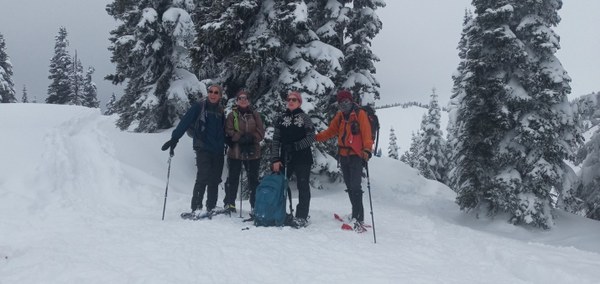
Once you begin to feel fatigued, you slow down and your heat production falls considerably. This can cause Hypothermia, a serious condition that can lead to death. People with Hypothermia are unable to think clearly or move well. Perform self-check-ins regularly throughout the day, asking yourself: How am I feeling? Am I hungry? Cold? Tired? Do I have what The Mountaineers call the “mumbles, fumbles, and stumbles?” Staying hydrated will also help with temperature regulation and can help you avoid becoming Hypothermic.
Are you planning to go sledding with family? Sledding is only permitted at the Paradise snow play area just north of the main parking lot. It is well marked and was established to keep families safe from tree wells and avalanche dangers. Last weekend I witnessed several families with small children sledding down the Edith Creek Basin Route (see Mount Rainier’s Winter Travel Map). They were not aware of the avalanche danger, which was a Level 2 that day, meaning there was moderate danger of slab avalanches happening on west and south facing slopes.
Looking at the map, one could see that the path they were sledding on headed right down into the Paradise River Valley on a west facing slope. They were unaware of the dangers of the creek bed and falls below. Avalanches are most common during or immediately following a storm.
Learn more about avalanches and avalanche danger. Consider taking a Winter Travel Course with The Mountaineers, in addition to an AIARE 1 course. This will help provide you with the best tools and knowledge for minimizing your exposure to risk in avalanche terrain.
A great way to start the day at Mount Rainier.
Are you interested in skiing, snowboarding or snowshoeing in the park? Being a safe backcountry enthusiast requires training, planning, and experience. You control the risk for you and your party by choosing when and where to recreate in the backcountry. What is your safety plan? Please share with me, as I like to learn how other folks stay safe.
A quickly-changing view.
Conditions often change on a dime. Two Sundays ago, my snowshoe partner and I started our day with bright blue skies, a rainbow, and sun. We were both excited; it looked as though it was going to be a top-notch bluebird day. Within the hour, the mountain weather had changed. Prior to heading out that day, we had checked the weather report. We read the avalanche reports and information. That day, the avalanche danger level was a 2; moderate, no travel on west facing slopes, observe terrain and keep an eye out for areas of concern. I am by no means an expert, but I take all backcountry travel seriously and come prepared. I knew there was a storm headed in that day, but it wasn’t expected until later, so it appeared to be early.
I have to admit that I was a little unnerved by the quickly condensing fog enveloping us. My snowshoeing partner kept saying, “It’s going to be okay, we can go further” and “You will be alright, just keep moving.” I did not feel all right. I did not feel safe. I stopped to get my bearings and realized that any travel at this point would be by GPS, or by map and compass. I explained to my partner that under the circumstances, I would be traveling no further, and that I wanted to head back downhill. Before I could do that though, I had to calm my racing fears.
According to The Freedom of the Hills, "human behavior and state of mind is more important to safety than the existence of any hazards.” My instinct told me that traveling any further in a white out condition wasn’t safe, so I turned around. Please do not be afraid to speak up if this happens to you. It is okay to know your limits.
This past weekend, as man and woman snowshoed past us, the woman expressed fear, and said she didn’t want to continue. Her companion was unknowingly hiking down into the Paradise water supply area. He hadn’t even looked at the winter travel map provided by the park, and had no prior knowledge of the area. He didn’t realize that he was in an avalanche-prone area. Lack of experience, training, and information is part of poor decision making in outdoor reaction activities, regardless of season. This person’s casual complacency and overconfidence in his abilities could have caused them harm.
Although I knew that heading southwest from Myrtle Falls, Paradise was less than a quarter of a mile away over one short ridge, I still felt unsure. Even with the proper tools, it was a scary event. I was hoping that the fog wouldn’t be as thick down below, but with the changes in the weather I knew anything could happen.
Mount Rainier’s park website states, “Navigation in harsh winter conditions can be extremely difficult. It is usually better to camp and wait for clearing weather than to continue and risk becoming lost.”
full whiteout conditions.
On the way back down, I noticed I was becoming extremely seasick, almost as if I had vertigo because of the whiteout conditions. I felt as though I were walking on a rocking boat. Has anyone else experienced this? I was thankful I had put sliced ginger into my water bladder. Ginger helps with digestion, is an alternative to sugary hydration mixes, and helps with nausea. Who knew I was going to need it that day? I certainly didn’t.
As we continued to walk back down the mountain, guided by GPS, we came across several other groups of folks. Some were heading up, while others were heading down the mountain. We stopped to speak to each group. Most groups heading up were experienced mountaineers going backcountry camping and skiing. They seemed unfazed by the dense whiteout conditions. The groups turning around were just like me, unnerved by the complete and utter lack of visibility.
Part of assessing risk is making good decisions, sticking with them, not being afraid to speak up, and knowing when to turn around. It is okay to not reach your planned destination. The journey is part of the adventure, and making good decisions in order to get home is part of mitigating risk. As Ed Viesturs once stated, “Reaching the summit is optional. Getting down is mandatory.” I may not be climbing the 8,000-meter peaks that he has climbed, but I am well aware that snowshoeing on Mount Rainier can become just as deadly with just one foolish mistake compounded upon other unwise choices.
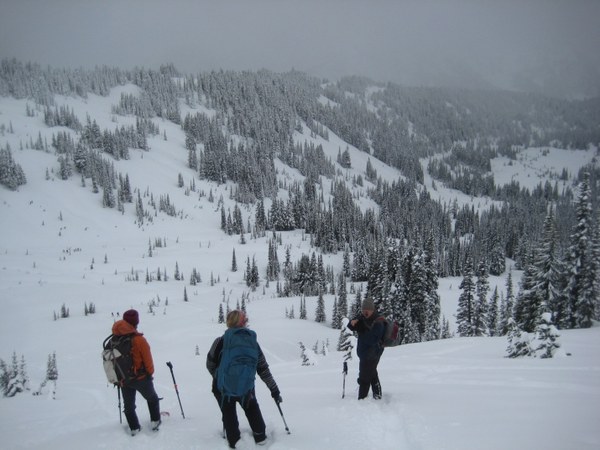
None of us can eliminate all risk while outdoor-adventuring, but when we start by making good decisions, we can lower the chances of having an accident, injury, or an unexpected night out.
Part of mitigating risks includes the drive to and from the mountain. Last Sunday, while we were happily snowshoeing all over Paradise, there was a major car accident on the road, which effectively closed the road to Paradise for hours. Speed, poor visibility, operator error, and poor weather conditions may have been factors in the accident.
Here are my suggested winter driving tips for your next adventure on Mount Rainier:
- Plan for extreme winter weather
- Travel with a full tank of gas
- Keep headlights on for best visibility
- Bring extra food and water
- Dress for winter weather
- Be sure to include extra dry clothing the in car for after winter play
- Tire chains are required inside the park
- Make sure the chains fit your vehicle
- Practice putting them on your vehicle before heading out
- Stop in approved chain-up areas to install, adjust, or remove chains
- Reduce speeds
- Leave space between your vehicle and other vehicles
- Use low gears, especially going downhill
- Know how to maneuver when your car starts to skid
- Allow the snow plow room to do its job
- Use caution when approaching shady areas, low points, and bridges as they may be slicker and/or icier than other parts of the road
- Plan to arrive early and leave early to avoid long wait times and congestion due to the amount of visitors the park has been seeing lately
- Overnight camping in vehicles is not permitted in parking areas
- Parking on the sides of the road may interfere with snow removal trucks and sanding efforts
Be sure to leave Paradise with enough time to safely get down to Longmire before 5pm when the gate is closed and locked for the night. The park suggests leaving Paradise no later than 4:30. After witnessing several accidents, and people having car issues, I suggest leaving no later than 4:15. If you need to put chains on your vehicle, plan to be back at your vehicle by 3:30 or so just to be on the safe side. After a day of exploring, I usually look forward to stopping in at the Copper Creek Restaurant for a hot piece of blackberry pie, therefore, I always get back to the car by 3-ish.
The park suggests tuning-into radio station 1610 am for the most current road information and requirements. Additionally, daily updates for the opening and closing of the Longmire to Paradise road are posted on Mount Rainier’s Twitter feed.
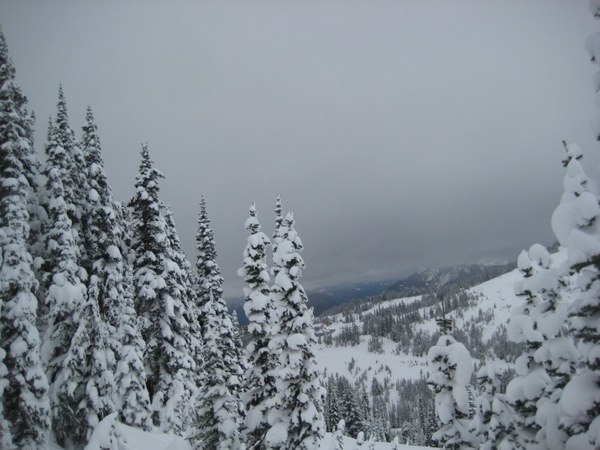
Another piece to mitigating risk is checking the current and upcoming weather forecasts for Mount Rainier. As I witnessed firsthand, mountain weather can change in an instant. Know your safety plan, err on the side of caution, and always tell a trusted loved one where you are going, and when are expected to arrive home.
Happy winter adventuring to you and yours. Hope to see you on the trails.
Main image of snowshoer at mount rainier national park. All photos courtesy of Regina Robinson.
Add a comment
Log in to add comments.I am new to snowshoeing and taking an intro class with the Mountaineers this winter. I really appreciate your report about snowshoeing at Paradise. It sounds like a lovely place to go some day, but I feel like we need some practice before trying it.
We experienced heavy fog hiking Skyline Loop last July and it is indeed unnerving! Fortunately it ebbed & flowed so we had okay visibility for most of the hike, but there was definitely a moment where I thought we were potentially in trouble.
My other concern is avalanche danger and I was wondering if there are areas at Paradise where you can snowshoe that tend to have low avalanche danger similar to the sledding area. It sounds amazing to see in the winter, I just want to be as safe as I can and not get in too deep until we learn more.
Would you carry an avalanche beacon, take the AIARE I avalanche course, etc. first or is there a beginner area to practice some basic snowshoeing skills without getting yourself into too much trouble? Thanks for any insight you're willing to share.
 Regina Robinson
Regina Robinson
